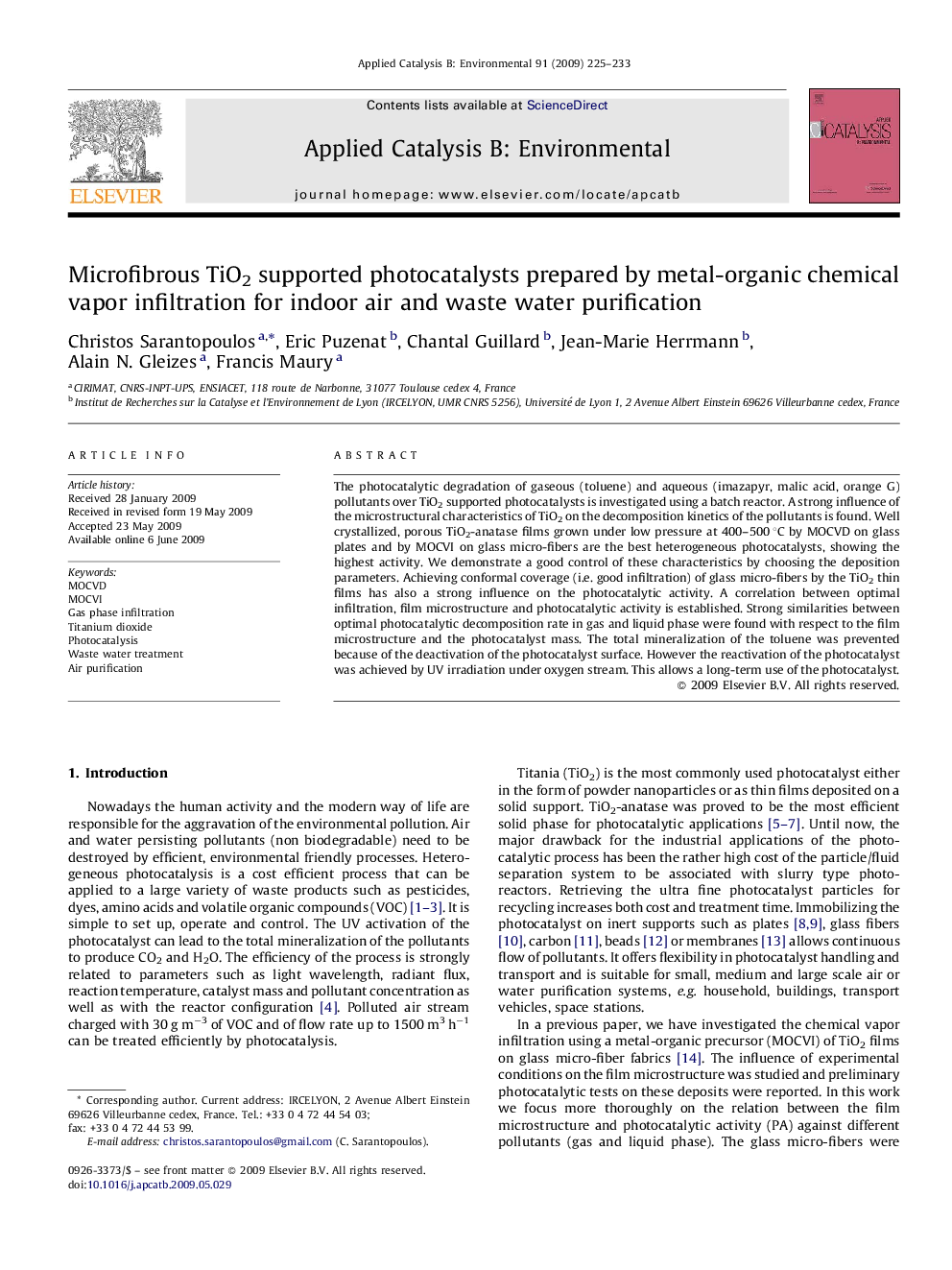| Article ID | Journal | Published Year | Pages | File Type |
|---|---|---|---|---|
| 47731 | Applied Catalysis B: Environmental | 2009 | 9 Pages |
The photocatalytic degradation of gaseous (toluene) and aqueous (imazapyr, malic acid, orange G) pollutants over TiO2 supported photocatalysts is investigated using a batch reactor. A strong influence of the microstructural characteristics of TiO2 on the decomposition kinetics of the pollutants is found. Well crystallized, porous TiO2-anatase films grown under low pressure at 400–500 °C by MOCVD on glass plates and by MOCVI on glass micro-fibers are the best heterogeneous photocatalysts, showing the highest activity. We demonstrate a good control of these characteristics by choosing the deposition parameters. Achieving conformal coverage (i.e. good infiltration) of glass micro-fibers by the TiO2 thin films has also a strong influence on the photocatalytic activity. A correlation between optimal infiltration, film microstructure and photocatalytic activity is established. Strong similarities between optimal photocatalytic decomposition rate in gas and liquid phase were found with respect to the film microstructure and the photocatalyst mass. The total mineralization of the toluene was prevented because of the deactivation of the photocatalyst surface. However the reactivation of the photocatalyst was achieved by UV irradiation under oxygen stream. This allows a long-term use of the photocatalyst.
